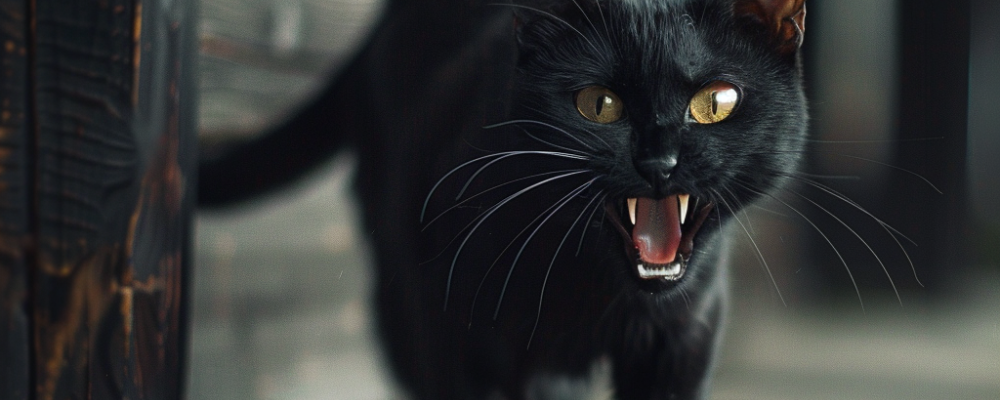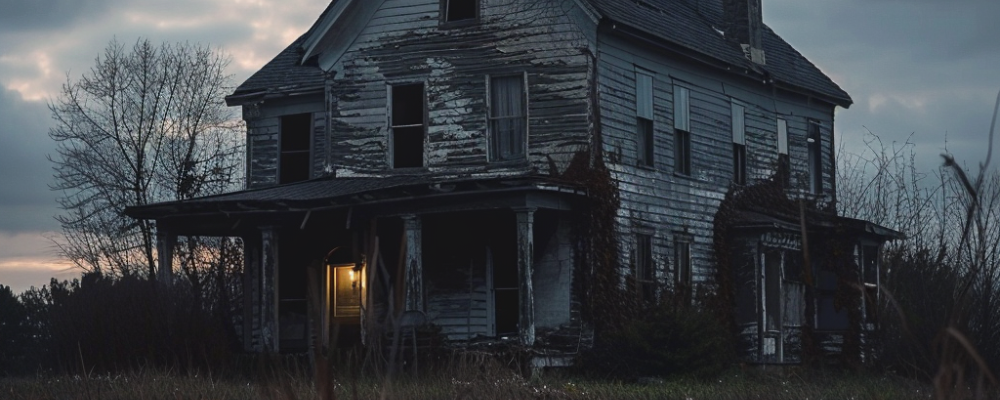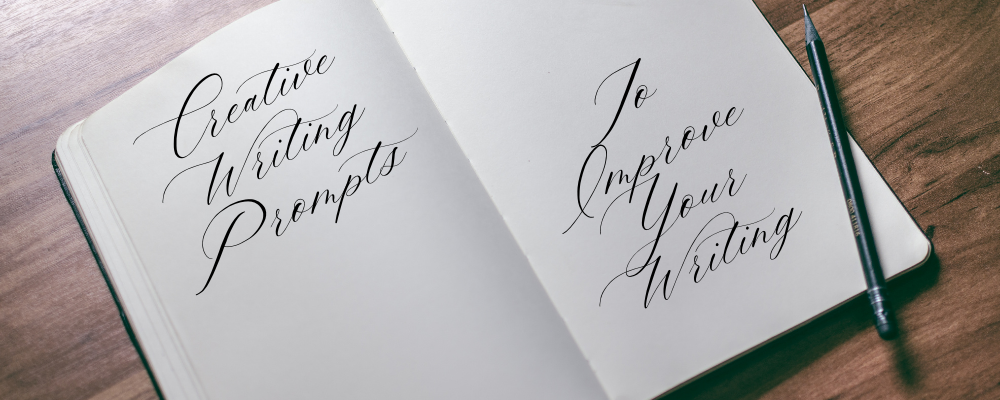Most Overused Horror Cliches – Top 10

You’re engrossed in a chilling horror novel, heart pounding as the protagonist navigates a terrifying situation. Suddenly, they jolt awake – it was all a dream! Once hallmarks of spine-tingling horror, moments like these have become predictable cliches. Today’s article examines the 10 most overused horror cliches in horror fiction and what you can do to keep your readers genuinely scared.
We’ll also look at some horror novels that show some creativity within each cliche. Then, I’ll give you some basic writing exercises to get you into the grove of thinking outside the box with your horror. And lastly, I’ll give you a list of resources for continued reading to help make sure your work stays fresh and engaging.
So, without further ado, let’s get into the most overused cliches in horror.
Table Of Contents
Top 10 Most Overused Horror Cliches
10. The Mysterious Warning
Some local elder or random stranger always warns the protagonists about the haunted house, cursed object, or evil spirit. But do they listen? Of course not. They have to learn the hard way. This is especially bad when the person giving the warning foretells the future with such accuracy that readers all but know what to expect.
You May Also Like: Most Overused Fantasy Tropes – Top 10
These characters are often used to information dump certain things about the villain or the curse and don’t tend to add much to plot development. They tend to pop back up later in the story with crucial information that they should have mentioned earlier.
9. The Dream Sequence
Have you ever started a book that came out swinging? Hands coming from under the bed, someone being followed by some unknown horror—whatever it may be, you’re in the thick of some genuinely scary stuff.
But then, the character wakes up, and it is all a dream! Not only is this a cheap way to get scares, but it usually leaves readers feeling ripped off, especially if it’s scarier than anything that’s actually happened in the book.
If you use dream sequences, try to weave them into a more prominent theme for your book so they don’t feel cheap and out of place.
8. The Cat Jump Scare
Phew, it’s just the cat. Horror’s favorite fake-out. Why does every pet cat have impeccable timing and a knack for making you think a serial killer is nearby? While not necessarily a plot point or “horror troupe,” it’s undoubtedly one of the most overused horror cliches in both novels and films.

I’m pretty jumpy, and I’ve never been scared by a cat jumping out of nowhere. Nine times out of 10, it’s something falling or a person. If you want to build up to a jumpscare, do it with something other than a cat, and your readers will thank you.
7. The Last Man/Woman Standing
The sole character left alive to face a relentless threat, often relying on dwindling resources and fading hope. They’re virtuous, resourceful, and somehow manage to escape the killer’s grasp (mostly) unscathed. Everyone else? Absolute cannon fodder. I guess it pays to be the protagonist.
These endings aren’t always bad. But if you lack a good ensemble of characters or fall in love with your lead, readers will often see this “last person standing” ending coming from the moment you start introducing your characters. Try to have some other important characters, too, so you’re not all in on the protagonist.
6. The Sinister Child
The Turn of the Screw, The Bad Seed, The Haunting of Hill House, and The Omen are all great books. But the “Sinister Child” cliche is a bit played out these days. Not every kid in every novel has to be creepy as heck, eerily psychic, or profoundly sensitive to the paranormal.
If you lean into an evil child antagonist, try not to make them the epitome of all evil with no redeeming qualities unless it’s on purpose.
5. The Killer Always Gets Back Up
A threat that keeps coming no matter what you do sounds frightening. But, you’ve got to set some limitations and not go to the well too many times. Someone just hit the masked killer with a frying pan, and he’s down. But wait! He’s getting up again! Is he invincible, or did you just not hit him hard enough?
You May Also Like: What Are Literary Devices? List & Definition Cheat-Sheet
After so many times of being down but not out, readers will catch on to what you’re doing and lose interest. Then, if some would-be hero finally delivers a coup de grâce, it can feel like it came out of nowhere. Like the antagonist has been all but unbeatable until the writer is ready for him to go.
4. The Creepy Old House
Now we’re getting into some seriously cliche horror themes. By now, everyone should know that if you ever inherit a mysterious mansion from a distant relative you never knew existed, don’t move in. It’s bound to be haunted.

Can you use the creepy old inheritance troupe to set the stage for a great book? Probably. But you’ve got to realize that you’re writing in a very familiar space, and it may be hard to get readers excited or ultimately do anything that feels unique. After all, we’ve all read and seen dozens of these stories play out.
3. Possession
A seemingly ordinary character starts acting weird, speaking in tongues, and making creepy contortionist moves… It’s time to call the exorcist cause you’ve got a case of demonic possession. In my experience, it’s hard to have genuine conflict with this horror troupe. Most times, it’s pretty clear-cut: “good vs. evil.”
If you’re looking to write a truly frightening possession novel, I suggest you explore the internal conflict of the possessed character. Can they fight back against the entity? Do they have a sliver of their humanity left? Or better yet, a “gray area” possession where the entity isn’t inherently evil, but its presence is causing harm unintentionally.
Another great tool could be an unreliable narrator. Is the possession actual, or is it a psychological breakdown? Make the reader question the protagonist’s perception of events through unreliable narration.
2. Faulty Technology
In horror land, cell phones are only good for creepy breathing sounds. Signal? Battery life? Forget about it. Those are luxuries for non-horror universes. I get why this one is a thing. It’s not very scary when characters can call for help in the middle of nowhere or text one another to be sure everyone is ok.
That said, if you set your horror novel in modern times, don’t be cheap with knocking everyone back to the Stone Age. Yes, something better than a storm or the bad guy cutting the power. People in real life have access to phones or computers almost constantly, yet they experience horrifying things.
You May Also Like: Best Apps For Writing – Top 5 Writing Software For 2024
So, it can be done. If you struggle with this, you can delve into more psychological horror, where a phone doesn’t poke a hole in the entire plot. Or, you can set your novel in the past, when characters would not have had phones and Wi-Fi.
1. Stupid Characters/Bad Decisions
When faced with a dangerous situation, the best plan is always to split up, right? Because nothing says survival like wandering alone in a dark forest with a dying flashlight. The character hears a noise from the outside and decides to investigate. Alone. At midnight. Wearing nothing but pajamas. And it’s never just the wind.
Characters may not always make the best decisions. Gullible characters may fall for things that others wouldn’t. And naive characters may believe something a wiser person would not. However, you’ve got to tell us that your character is naive or gullible.
What you should not do is present readers with a logical, rational, experienced character and then proceed to make that character make a series of illogical, irrational, downright bad decisions just because it serves the plot.
Novels That Break The Mold
As mentioned above, here is a look at some horror novels that take the “cliches” above and do something fresh with them. So, if you’re interested in a fresh take (or want some good horror recommendations in general), here is a list of things I recommend you check out.
“Mexican Gothic” by Silvia Moreno-Garcia
- The Mysterious Stranger
Mexican Gothic subverts the “mysterious warning” trope by making the warnings ambiguous and unreliable. Frustrated by the cryptic messages, the protagonist is left to question their source and validity, adding to the overall sense of dread.
“House of Leaves” by Mark Z. Danielewski
- The Dream Sequence
This surreal novel utilizes dreams and dream-like sequences that blur the lines between reality and fantasy. The fragmented narrative keeps readers guessing what’s real and what’s a terrifying figment of the characters’ (or reader’s) imagination.
“Bird Box” by Josh Malerman
- The Last Man/Woman Standing
This novel takes the “last man standing” trope and injects isolation and paranoia. While the protagonist is left alone with a few survivors, the actual threat remains unseen and undefined, creating a constant sense of unease that isn’t predictable.
“Let the Right One In” by John Ajvide Lindqvist
- The Sinister Child
Let the Right One In is a wonderful novel about a young boy who befriends a mysterious child with a peculiar condition. It avoids the typical “evil child” cliche and is a beautiful love/coming-of-age story that still manages to be horror.
“Final Girl” by Riley Sager
- The Killer Always Gets Back Up
Final Girl plays with the “killer always gets back up” trope by exploring the psychological impact of past trauma on a survivor (the “final girl”). The suspense builds as the protagonist confronts her fears and a potential new threat that feels like the horrors keep coming in a very entertaining way.
“Annihilation” by Jeff VanderMeer
- The Creepy Old House
Annihilation goes beyond the typical “creepy old house” trope by creating a bizarre and ever-shifting environment, “The Area X.” The true horror lies in the unknown nature of this place and its effect on those who enter. If you like House of Leaves, you’ll enjoy this.
“The Devil in a Blue Dress” by Walter Mosley
- Possession
This neo-noir detective novel features a possession case where the line between the supernatural and psychological is blurred. The protagonist is also an unreliable narrator, making the reader question the reality of the events.
“No One Gets Out Alive” by Adam Nevill
- Faulty Technology
Usually, the technology disappears in horror. No One Gets Out Alive uses technology to amplify the horror. The protagonist, a young woman renting a room in a large, decaying house, documents her experiences through online posts and video calls. However, the technology becomes distorted and unreliable, capturing unsettling glimpses of the unseen entities that haunt the house.
“The Troop” by Nick Cutter
- Stupid Characters/Bad Decisions
The Troop avoids the trope of purely “stupid” characters by placing a group of teenagers in a horrific situation that forces them to make difficult choices under pressure. Their decisions, while not always the wisest, are understandable given the circumstances, making the story more believable and suspenseful.
Writing Exercises For Unique Horror
Want to craft truly terrifying, unique tales that leave readers sleeping with the lights on? These writing exercises will challenge you to step out of the most overused horror cliches and unleash something fresh. Below are some creative writing prompts for horror, unique character-building exercises, and a “plot twists and scares” section.

Creative Writing Prompts
- The Unseen Threat: Craft a story where the true horror is unseen, unheard, or even a terrifying concept that slowly drives the characters (and readers) mad.
- The Corrupted Sanctuary: Hospitals, churches, and schools are often seen as safe havens. Twist this trope by creating a story where a place of refuge becomes a breeding ground for something sinister. How do the characters cope when the supposed safety net becomes a terrifying trap?
- Technology’s Dark Turn: Technology is often a tool for good, but it can also be a gateway to horror. Write a story where a piece of technology becomes or is used for something sinister.
- The Unreliable Narrator: Distort the reader’s perception with an unreliable narrator. Are they a victim of circumstance, going mad, or an alcoholic? Let the reader question everything they read, building a chilling sense of paranoia.
- The Monster Within: Horror doesn’t always come from outside. Explore the darkness that lurks within the human psyche.
Character Development
- The Flawed Hero(ine): Move over, Mr./Ms. Perfect. Craft a protagonist with a dark secret, a crippling phobia, or a tragic flaw. How does this flaw impact their ability to confront the horror they face?
- The Villain’s Redemption (or Lack Thereof): Is the villain truly evil, or are there shades of gray? Explore the villain’s backstory and motivations. Do they deserve redemption, or is their fate sealed?
- The Bystander Who Knows Too Much: Not all heroes wear capes. Create a seemingly insignificant character who stumbles upon the truth and becomes a target. Do they use their knowledge to survive or become another victim?
Plot Twists And Scares
- The False Sense of Security: Lull the reader into a false sense of security, then unleash a sudden and horrifying twist. How can you subvert expectations and leave the reader reeling?
- The Red Herring: Misdirection is a powerful tool. Plant clues that point toward one explanation and then reveal a shocking truth. How can you use red herrings to build suspense and keep the reader guessing?
- The Unforeseen Consequence: Sometimes, good intentions pave the way to hell. Let a character’s actions have a horrifying consequence. How can you turn a seemingly heroic act into a terrifying mistake?
Further Reading And Resources
If you want more info on writing good horror novels and escaping traps like the above cliches, here are some other things you can check out.
- The Lore Podcast – Lore is a podcast about the frightening history behind common folklore and a great source of unique inspiration.
- The No Sleep Podcast—This anthology series features listener-submitted horror stories in various styles and voices. It’s a great way to stay on top of current horror trends and discover new storytellers.
- 12 Common Beginner Writing Mistakes You Must Avoid
- Write Better Characters And Plots – 5 Tips
Conclusion
There you have it, my friends, the top 10 most overused horror cliches. To many avid readers, horror thrives on originality. You can craft stories that genuinely terrify your readers by avoiding cliches and embracing fresh ideas. Comment below and let me know your favorite/least favorite horror tropes.